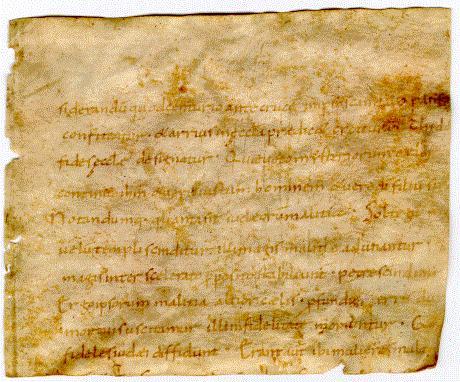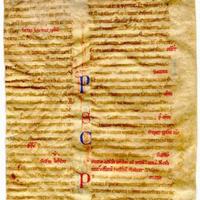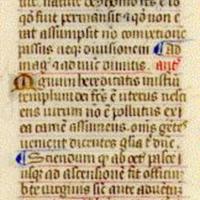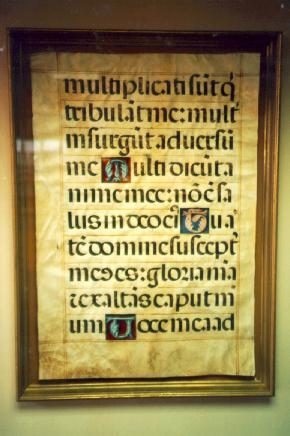Manuscript Fragments
Manuscript Fragments. Loaned by the Book Restoration and Conservation Co., Kenosha, Wisconsin.
These fragments from the 14th century written in Gothic hand illustrate how early printing emulated the manuscript tradition. Compare the text in the Gutenberg Bible facsimile with these three examples. Note the similarities in format and style.
On occasion, early printers and bookbinders recycled old manuscripts to create bindings for other printed texts. The fragments of manuscript leaves shown here were used as binding materials in the late 18th century and were uncovered during the restoration of the books.
A leaf from a Spanish Choir Book or "Gradual". [S.l.]: s.n., n.d.. Administrative Offices, Golda Meir Library. Manuscript is the gift of Abbey Rents.
Executed by Spanish monks on vellum, this leaf is part of a manuscript believed to have been used in a cathedral at Seville. The rounded letter forms on this leaf are indicative of Iberian manuscript styles during the late medieval and early Renaissance period.
Note the similarities and differences with the gothic and roman typefaces used by books in this exhibit, particularly the roman fonts used in the 1475 Martial and Leto's Romanae historiae printed in 1500.
This leaf contains a section of Psalm 3, translated below:
[Why O Lord], are they multiplied that afflict me? Many are they who
rise up against me. Many say to my soul: There is no salvation in his
God. But thou, O Lord, art my protector, my glory, and the lifter up
of my head. I have cried [to the Lord with my voice: And he hath
heard me from his holy hill.]




